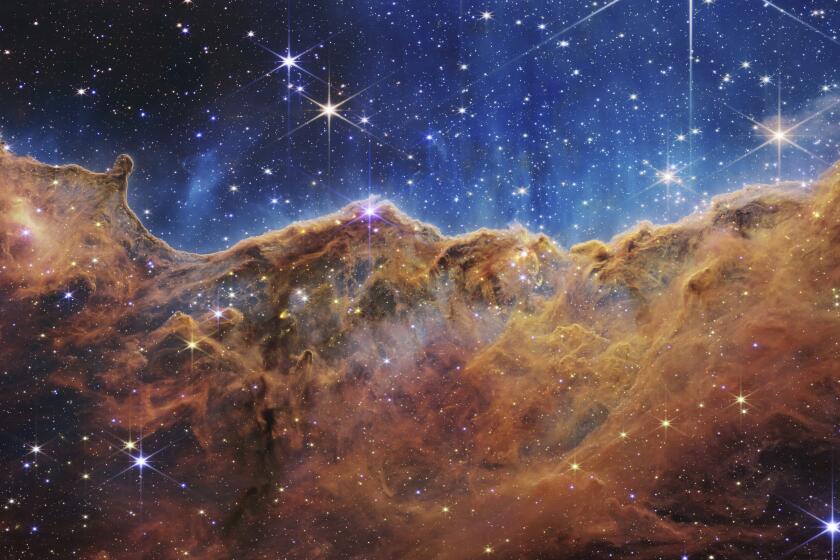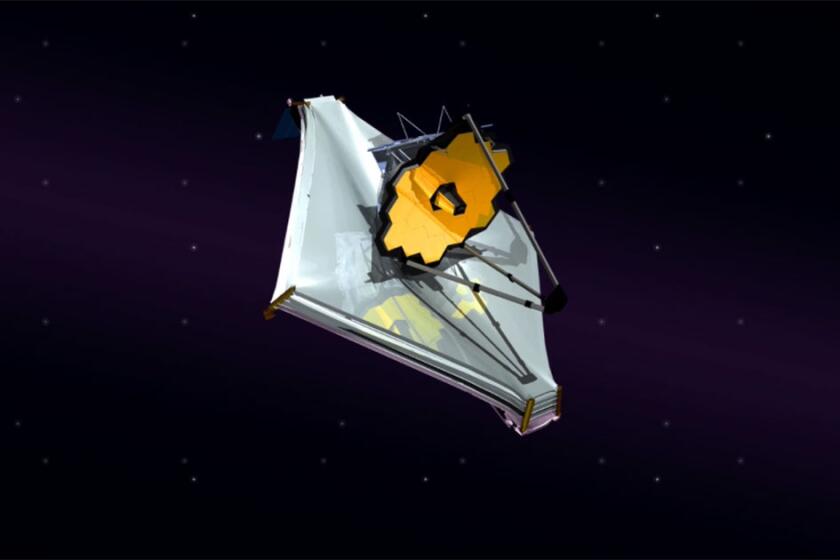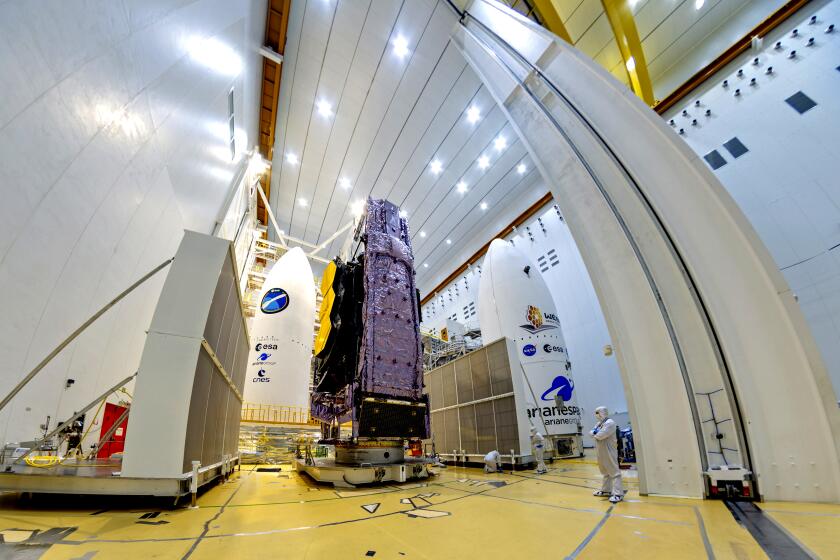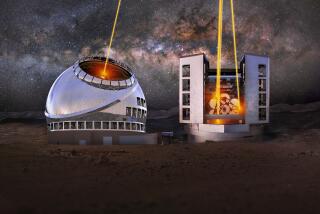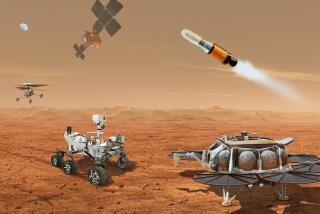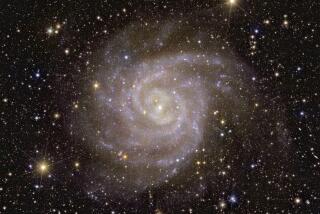First image from NASA’s James Webb Space Telescope reveals thousands of galaxies in stunning detail
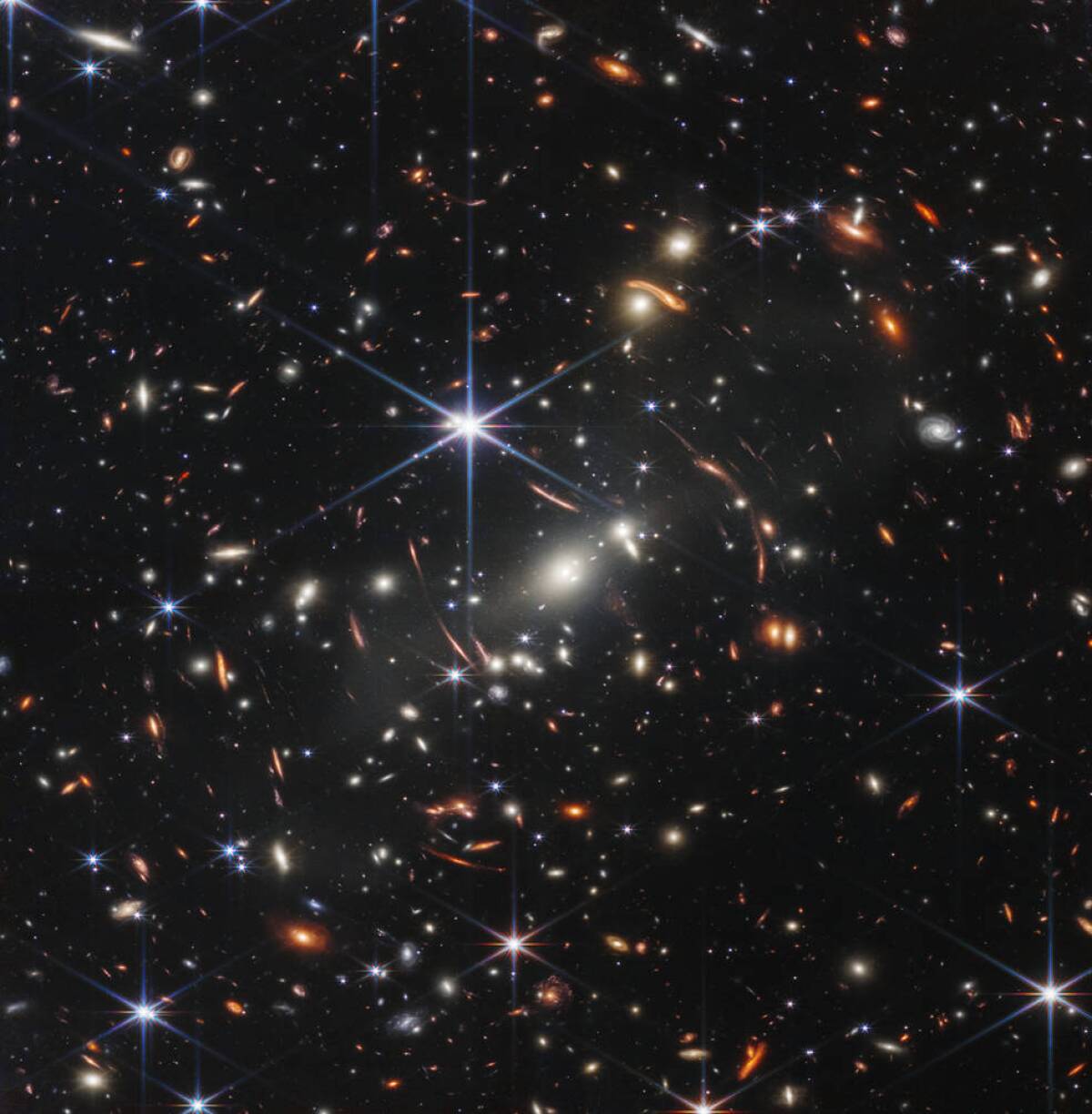
Billions of years ago, long before a swirling cloud of gas and dust coalesced to form the sun, light left the earliest stars and began a long journey through space.
The light has been traveling ever since, covering trillions upon trillions of miles. It hurtled by galaxies and their nascent stars, some of which were accompanied by planets. And on one of these, a species evolved with the ability not only to question what might be out there, but to build tools to see what its own eyes could not.
On Monday, the world got its first glimpse of that ancient light courtesy of NASA’s James Webb Space Telescope, the most sophisticated and ambitious deep-space viewing tool yet assembled.
It’s a snapshot of deep space, with innumerable galaxies swirling around a central point like the light thrown off from a disco ball.
The world gets its first glimpse of ancient light courtesy of NASA’s Webb telescope, the most sophisticated and ambitious deep-space viewing tool yet assembled.
“If you held a grain of sand on the tip of your finger at arm’s length, that is the part of the universe that you’re seeing — just one little speck of the universe,” NASA administrator Bill Nelson said.
Nelson unveiled the image at a White House news conference, flanked by President Biden and Vice President Kamala Harris.
“These images are going to remind the world that America can do big things,” Biden said. “That’s who we are as a nation.”
The telescope will be able to peer into the farthest reaches of space. The data it collects will allow scientists to better understand the formation of stars and galaxies.
Webb is the successor to the Hubble Space Telescope, which transformed science’s understanding of the vastness of the universe. One of Hubble’s most famous images, the eXtreme Deep Field, shows smudges of light representing some 5,500 galaxies, the faintest of which enable us to look back in time 13.2 billion years.
Webb allows astronomers to zoom in on Hubble’s faintest flecks. Light in the eXtreme Deep Field took weeks to collect. Webb produced an even sharper view of even older light after just 12½ hours of exposure.
“It’s an emotional moment when you see nature suddenly releasing some of its secrets,” Thomas Zurbuchen, associate administrator for NASA’s Science Mission Directorate, said in the days leading up to the unveiling. “It’s not an image. It’s a new worldview. You’re going to see nature giving up secrets that have been there for many, many decades, centuries, millennia.”
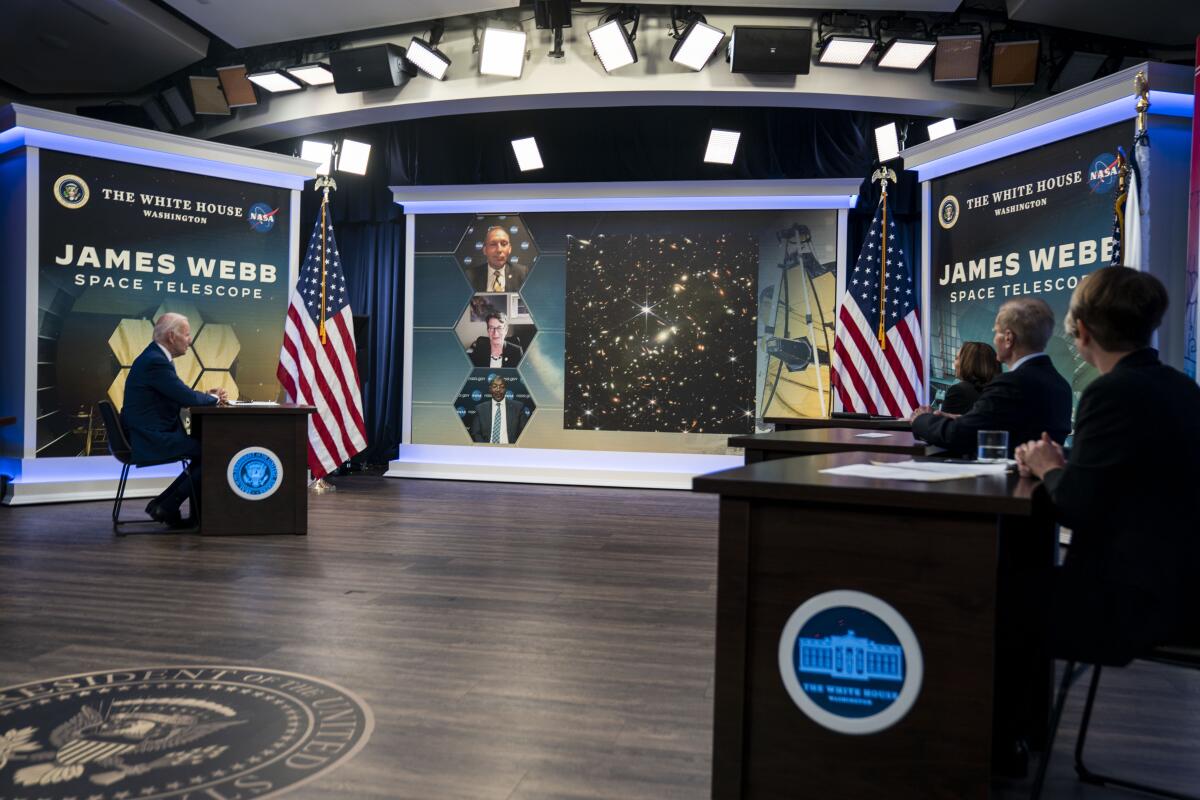
Webb can, quite literally, see galaxies far, far away as they were long, long ago — just a few hundred million years after the big bang. It intercepts light in the infrared part of the spectrum, whose wavelengths are too long to be visible to the human eye.
Built at Northrop Grumman’s Space Park in Redondo Beach, Webb launched on Christmas Day. Its destination was L2, scientific shorthand for the second Lagrange point roughly 930,000 miles from Earth. It’s one of five places where the gravitational forces of the sun and the Earth are in balance, allowing Webb to remain a fixed distance from our planet.
It took nearly a month for the telescope to get there. Then it slowly and deliberately unfolded itself over the course of two weeks.
An intricate system of latches, cables and pins released a five-layer sunshield about the size of a tennis court. Once that was deployed, the telescope’s 18 hexagonal mirrors swung into place, creating a honeycomb-like structure 21 feet across. The process wouldn’t have seemed out of place in an episode of “Transformers.” (Indeed, NASA released a short video about Webb featuring Peter Cullen, the actor who voiced Optimus Prime in the original 1980s cartoon.)
Each mirror is coated in 100 nanometers of gold to enhance its ability to reflect infrared light. The mirrors were carefully aligned by focusing on a star with the unwieldy name 2MASS J17554042+6551277. The test image, released to the public in March, showed a brilliant star that appeared to radiate light from six points, a feature of the telescope’s hexagonal mirrors.
But the background caught scientists’ attention: Behind the star were countless orange dots, each representing a galaxy billions of years old.
It was a tantalizing peek at the telescope’s capabilities.
The James Webb Space Telescope launches to space Christmas Day, the culmination of two decades of work: ‘It feels like we sprinted a marathon.’
Hubble, launched in 1990, has offered unprecedented insight into the cosmos during its decades of service. Its observations have helped scientists determine the age of the universe and the rate of its expansion, along with discovering black holes, obscure moons and exoplanets.
But Webb is exponentially more powerful. Its mirror is six times larger than Hubble’s, meaning it can collect far more light and see the universe as it appeared at a younger age. It also has far greater capabilities to study infrared light.
Webb wouldn’t work if it were where Hubble is. The newer telescope is so much more sensitive that it would be overwhelmed by light and heat from the Earth, moon and sun. But its distance also means it’s too far away to be repaired manually by spacewalking astronauts, as Hubble has been five times since its launch.
Hubble had been in the sky for less than a decade when NASA began talking about the technology that would eventually replace it. Construction of the new telescope, named for NASA’s second administrator, began in 2004 with a $1-billion budget and targeted launch date of 2010.
But the budget and timeline expanded nearly as fast as the universe it was meant to explore, ultimately costing $10 billion.
The team didn’t just have to ensure the materials and technologies on the telescope would work properly once shot into space. In many cases, given the pathbreaking nature of the device, they also had to invent those materials from scratch.
The segmented cryogenic mirrors, the five-layer sunshield, the microshutters that capture infrared light — all of it had to first be imagined and lab-tested before being manufactured for use on the telescope.
The Webb Space Telescope could help us understand the origins of all we know. But it could be set back by the need to survive the here and now.
Its soaring costs ate into budgets for NASA’s other projects. In 2011, Congress floated a bill to kill the project entirely. If a risk this big failed, “the progress of astronomy could be set back by a generation,” the journal Nature warned in 2010.
For Jonathan Arenberg, Webb’s lead engineer at Northrop Grumman from 2012 to 2017, the experience of seeing the first image was one of “overwhelming emotion,” he said.
“We basically showed the world that we kept our promise,” he said. “We’ve been promising this revolutionary machine, and here it is.”
The focus moves now from the engineering feat of the telescope itself to the scientific endeavors it will be used for, said Charlie Atkinson, who succeeded Arenberg as Webb’s chief engineer at Northrop Grumman.
In its first year, 286 research teams will use the telescope to study climate systems on Pluto, a molten lava planet some 200 light years from our solar system, and the supermassive black hole at the center of the Milky Way galaxy, among other projects.
From this point on, Atkinson said, Webb “is all in the hands of scientists.”
